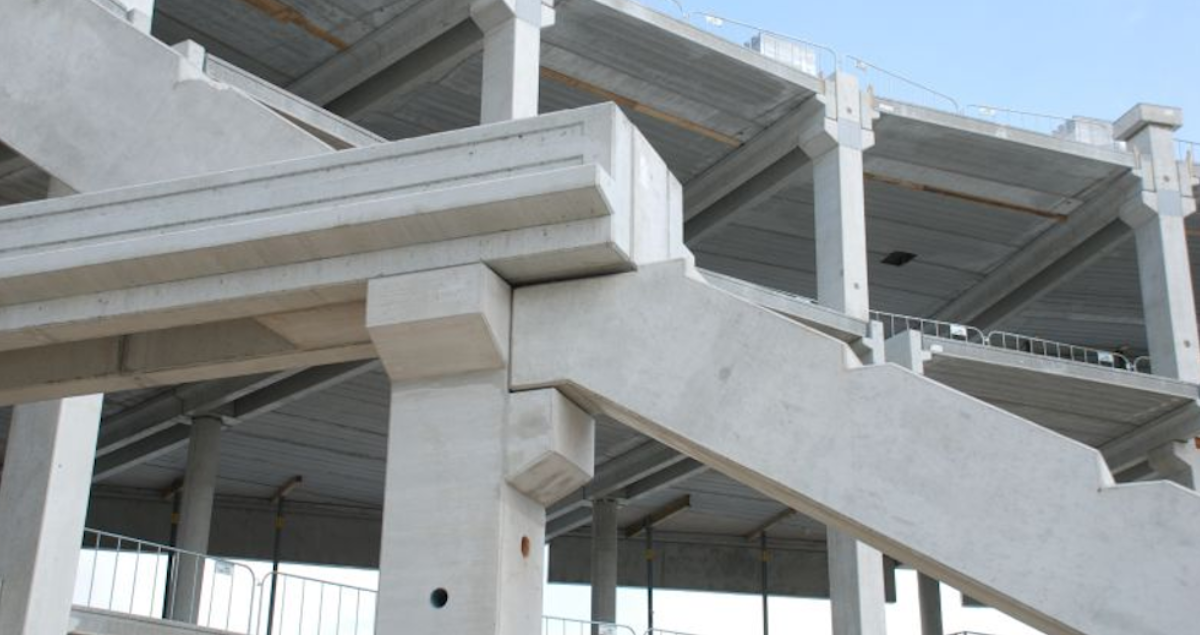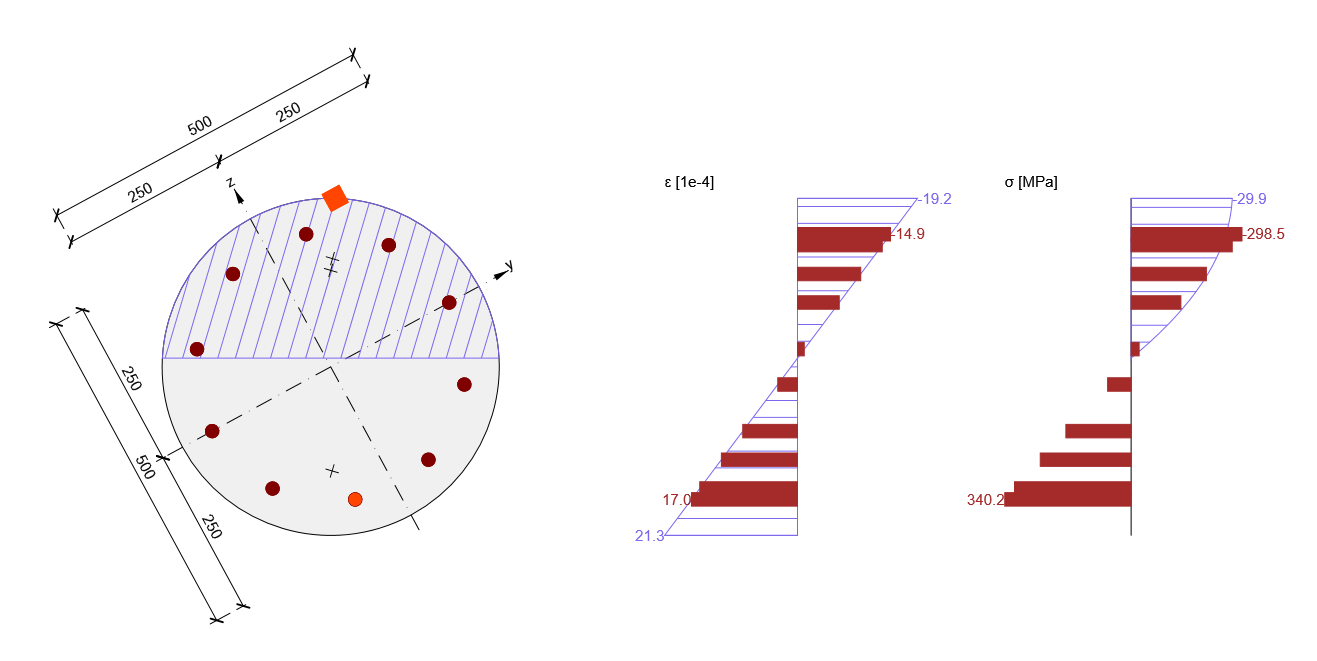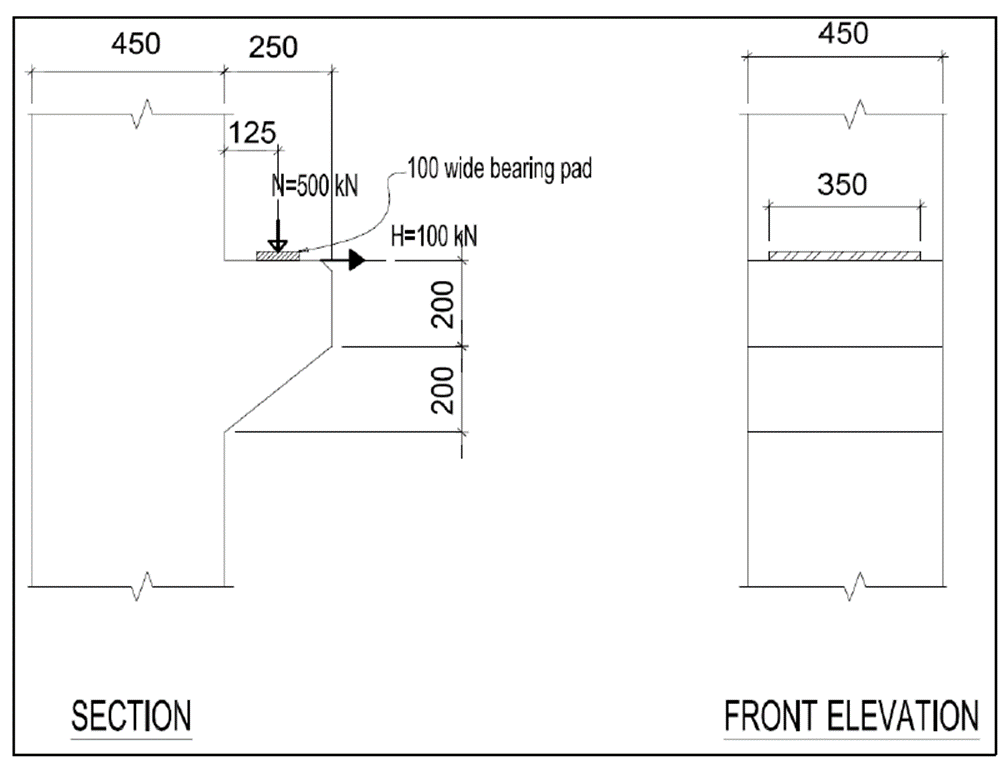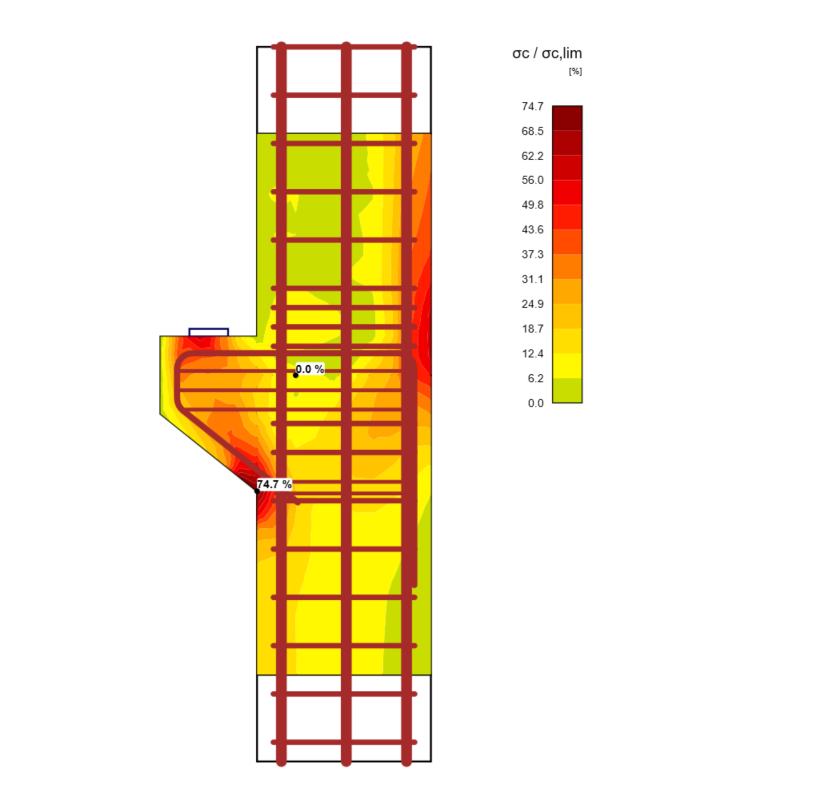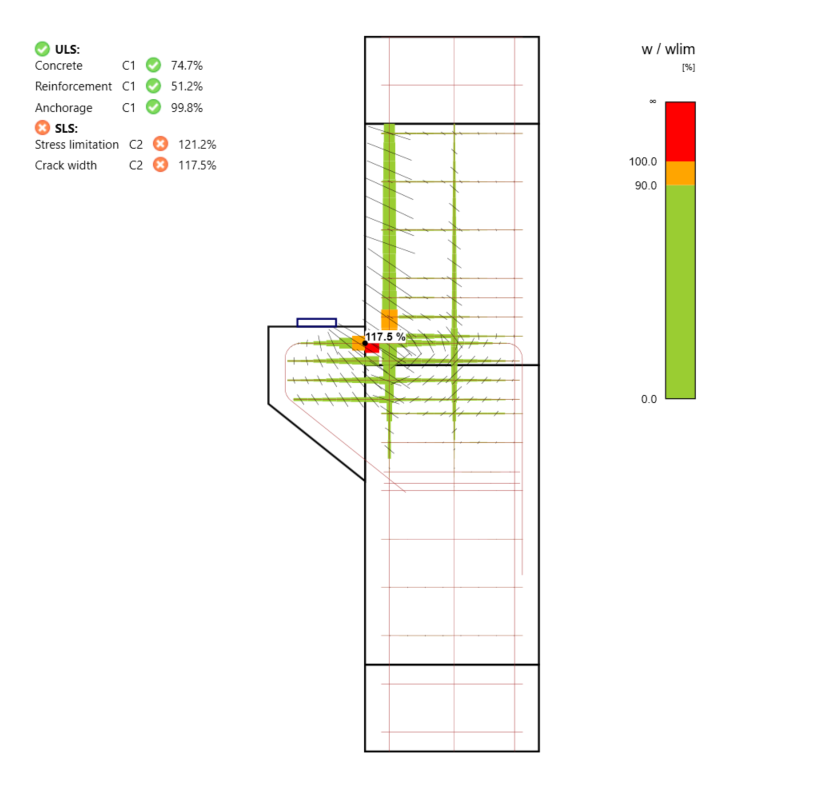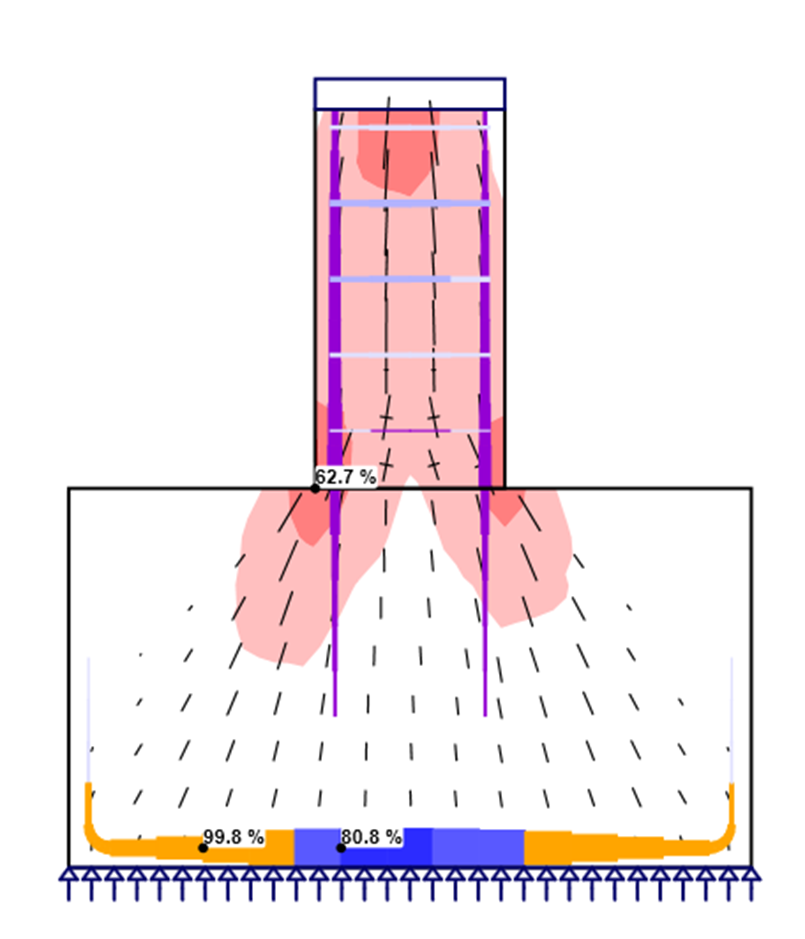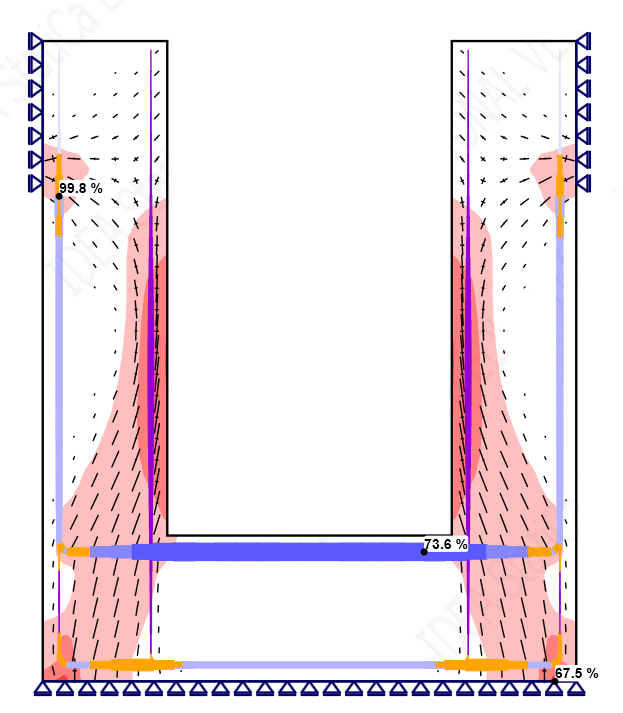Solve any precast concrete member
Well, indeed, it is!
How, you ask?
With the proper set of powerful yet easy-to-use tools allowing you to flow smoothly and efficiently through the designing process, covering the whole structure from the roof to the foundations, of course.
I'm convinced that after reading this article, you will say goodbye to tedious hand calculations, neverending Excel spreadsheets with thousands of rows just waiting for you to mistype a formula unintentionally, estimations to save precious time, and last but not least, using simplified applications not covering everything that's required.
You will learn how to check composite hollow-core slabs, precast beams with openings, corbels, columns, and foundations. All of this is done with the automatic consideration of rheological effects such as creep and shrinkage by applying Time Dependent Analysis (TDA) with the software and covering all discontinuity regions using the world-class Compatible Stress Fields Method (CSFM).
So, buckle up, and enjoy the educational ride with me!
Solve structures from roof to foundations in no time!
I still remember struggling to finish the design of a precast structure for my Master's thesis.
It was a single-story gymnasium with an overall width of 26.6 meters and a length of 44.3 meters. The total height was 8.0 meters. The bearing system was considered a system of transversal frames consisting of a prestressed roof girder with openings supported by columns with reinforced concrete corbels, and a set of bracings in the longitudinal direction. I used hollow-core slabs with a cast-in-situ layer at the top as roof elements. That doesn't sound so complicated, right?
So what was the struggle?
It was a very tedious process because all I had back then was the global analytical software and books. I'd started to prepare Excel spreadsheets so that all the calculations would be as efficient as possible. Nevertheless, the number of rows in the file still haunts me a little to this day.
Today, thanks to the fact that I'm skilled in using all IDEA StatiCa Concrete applications, I would probably finish the whole structural part of the thesis in a day or two instead of months.
Let me show you.
The roof, the roof, the roof is ...?
Luckily not on fire, but easy to deal with using IDEA StatiCa Beam!
What are the challenges of the design of composite hollow-core slabs? Engineers should be especially aware of the behaviour of different materials used for individual layers, shear in joints, the importance of construction stages, etc.
Since the Beam application has TDA implemented, all you need to do is define the materials, geometry, boundary conditions, loads (or import the internal forces from third-party software), and construction stages and run the comprehensive analysis covering all ultimate limit state (ULS) and serviceable limit state (SLS) checks.
Don't hesitate to try it yourself. Get inspired with this sample project of a slab.
Long-span roof girders
For such members, the reinforced concrete is not an option anymore. So, prestressed concrete it is. And we all know what that means. Optimizing the member's cross-section geometry, the number of tendons, evaluating initial stress, losses, etc. Plenty of things to take care of.
Then, to save the material and make the structure lighter, you must add openings. Therefore, build the equivalent truss model and use the Strut and Tie method (SaT) to properly check such discontinuity regions. Which adds even more hours to the already time-consuming process.
Or, you can use IDEA StatiCa Detail with its CSFM method, optimize the structure, and on top of that, significantly save time. How does that sound?
To help you with the modeling process, check the ready-made model of a prestressed beam with openings.
"I will always support you," said the column to the girder
The correct design of a column is essential for the whole structure. And that goes double for slender columns. Such members must be considered stability-sensitive. Therefore, taking the second order effects into account is a must.
Save the hassle of crunching the numbers using the approach from a code and use a more efficient approach instead. Read about the trouble-free design of concrete slender columns. Or check the circular column with second-order effects model done in the IDEA StatiCa RCS.
Corbel – a little helper
Probably the easiest part of the project. Corbels are usually stressed by compressive force as an action from a member placed on them. However, it's necessary to consider a recommended portion of a horizontal load. The equivalent truss model is not that complicated in this case, and the results are obtained quite quickly.
But (there is always a but), what if I tell you that satisfying ULS results doesn't mean the structure won't be cracked or deform excessively? Let's explain it with a practical example.
We have a corbel with given geometry, properties, and reinforcement stressed by normal and shear force as in the image below.
When checking this example manually, you use the Strut and Tie method, evaluate the compressive stress in concrete, and compare it with the design capacity value. Then you calculate the tensile stress and design a reinforcement accordingly. The job is done and you can move to another part of the project.
However, just to be sure, let's double-check the design, this time using software.
I've modeled the same corbel in IDEA StatiCa Detail. Let's check the results. As per the manual calculation using the SaT method, the ULS checks are okay. And I've confirmed that using the Detail application.
Nevertheless, this time, we used a more advanced approach and can also see the second part of the overall check. And it's quite surprising. The SLS checks of the same structure with the same properties are not satisfactory.
And that's something you can't assess using the SaT method. Neglecting SLS checks might directly impact the structure's service life. My recommendation is to always check the structure for both ultimate as well as serviceable limit states.
Usually, column and corbel are checked separately. But thanks to CSFM, you can include both in one model. Take a look at the column with corbel model.
Holding it all
The last step is to check the foundations. Areas near supports are discontinuity regions too. So you can once again start the Detail application and do the structural engineering magic. Checking different types of column-foundation connections is not a problem.
Including complex connections such as niched columns!
As the cherry on top, you can set the stiffness of supports manually based on your calculations to simulate the elastic subsoil behavior! To learn more about this, see the Types of supports in IDEA StatiCa Detail article.
And that's it. You now have the cookbook and know the workflows. So, don't wait any longer and start modeling on your own! To avoid any unwanted mistakes, read the Frequently overlooked design considerations in reinforced concrete structures article.
Conclusion
The purpose of this article is not to trash talk the manual calculations using simplified tools and approaches or the Excel spreadsheet you're used to using to check precast concrete structures. It also isn't about telling you that you must immediately switch to using IDEA StatiCa products only. If it works for you, great!
I wanted to show you that there is another way that sometimes might be faster and more accurate. Or that using the previously mentioned approaches sometimes might not be enough and may lead to potentially unsafe design affecting, e.g., a structure's service life.
The last recommendation I'm going to give in this text is to always use your engineering judgment and not be afraid to learn new things.
Find out more about concrete design possibilities in our Support Center, where you can also learn how to use the applications in many tutorials, see our Product Engineers in action in one of our webinars, or download a sample project.
If you are starting with the software or just want to improve your skills, check out our self-paced learning and professionally certified Campus courses and select the one that suits your needs the best.


